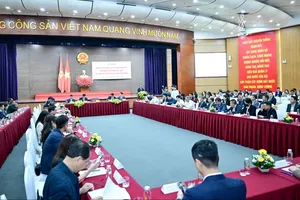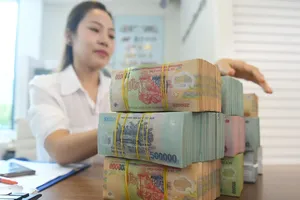 |
Many banks are running credit incentive programs (Photo: SGGP) |
Even though the interest rates in general have seen significant drops, credit in the whole economy by the end of October 2023 had only been VND12.8 quadrillion (US$527 billion), a rise of nearly 7.4 percent compared to 2022 but still far away from the assigned target of 14 percent by the State Bank of Vietnam.
Therefore, lately, Prime Minister Pham Minh Chinh sent a formal dispatch asking the State Bank review its weaknesses in managing credit growth last year as well as the credit granting results of each credit organization so as to devise a feasible solution to increase this rate this year.
Adopting that dispatch, the State Bank of Vietnam released an announcement on expanding the credit room for credit organizations. Accordingly, those whose credit balance reaches 80 percent of the goal are allowed to actively raise their credit room, with a priority to any credit organizations focusing on the Government’s key areas and lowering loan interest rates lately.
The State Bank of Vietnam further informed that in July 2023, it allocated the credit room to all credit organizations with the total growth of 14.5 percent. However, in the first 11 months this year, due to the unhealthy economic situation in the country, the capital absorption and credit demand were still weak. Until November 22, this growth only came to 8.21 percent, not to mention the dissimilarity among credit organizations.
“The State Bank has already been flexible in transferring the unused room from this credit organization to others in need. Until the end of this year, it will closely monitor the market to timely adopt administrative solutions, creating favorable conditions for credit organizations to expand their credit room when needed to offer credit capital to the economy”, said the Bank’s leaders.
Since this November, many commercial banks have synchronously reduced loan interest rates from 1-2 percent a year while offering various interest rate incentive packages to businesses, household businesses, and individuals to foster credit growth.
For instance, Agribank said that besides decreasing its short-term interest rate by 1.3-4 percent per year, it is also launching 5 incentive schemes for businesses with the scale of VND165 trillion ($6.8 billion) and a support rate of up to 2 percent. Its mid- and long-term loan interest rates are also quite attractive, using the VND10-trillion package ($412 million). All are done to meet the target of increasing its credit growth by 2-4 percent at year end.
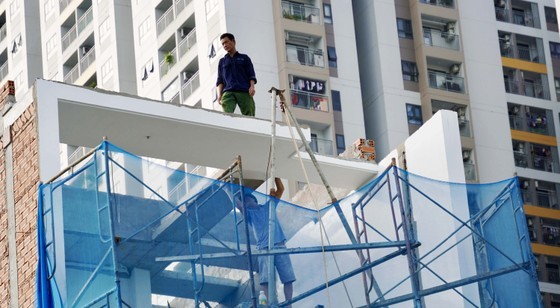 |
The investor of Khai Vy Residential-commercial Complex in District 7 of HCMC has announced the registration for a bank loan of VND100 billion ($4.1 million) to complete the project (Photo: SGGP) |
From the perspective of state management, Deputy Director Nguyen Duc Lenh of the State Bank of Vietnam – HCMC Branch shared that the credit growth rate of HCMC until October rose by 4.67 percent compared to 2022, lower than the national one. The banking industry, therefore, will focus on the seasonal capital needs as this demand usually goes up near Tet holiday.
“The banking industry in HCMC allocates VND9 trillion ($370 million) to loans for market stabilization with a short-term interest rate of 4-6 percent a year so that enterprises in need can access capital easily, and in turn reduce product prices during Tet holiday. This industry also fosters capital provision through the program ‘Business – Bank Connection’, the launch of credit packages with a supporting rate of 2 percent according to Decree No.31 by the Government, the introduction of the VND120-trillion credit package for social housing construction. These activities aim at promoting credit growth as well as general economic development in the city”, said Deputy Director Lenh.
Assoc. Prof. Dr. Nguyen Duc Trung – Rector of HCMC University of Banking – commented that with the current credit growth rate across the economy in the country, it is a tough challenge to meet the target of 14 percent even after taking advantage of seasonal demands. However, with a GDP increase of only 4.7-5 percent, this credit growth rate of 11-12 percent is logical.
Dr. Vo Tri Thanh – Head of the Institute for Brand and Competitiveness Strategy – mentioned the need to flexibly adjust the credit growth rate according to reality even after setting the figure of 14-15 percent a year. Vietnam is now using excessive financial leverage because the credit-to-GDP rate of 124 percent is too high compared to the average one of 110 percent. In the future, when the capital market develops more, the credit growth rate in Vietnam should be below 10 percent instead of the current figure of 13-15 percent.



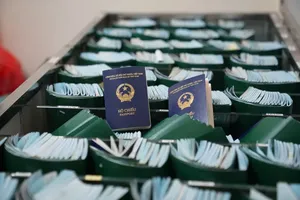
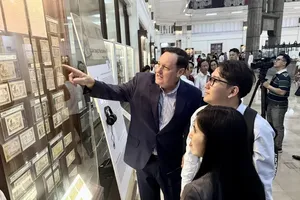
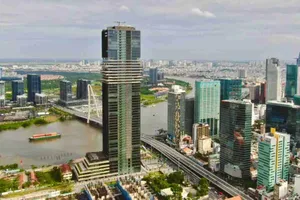

)

)




